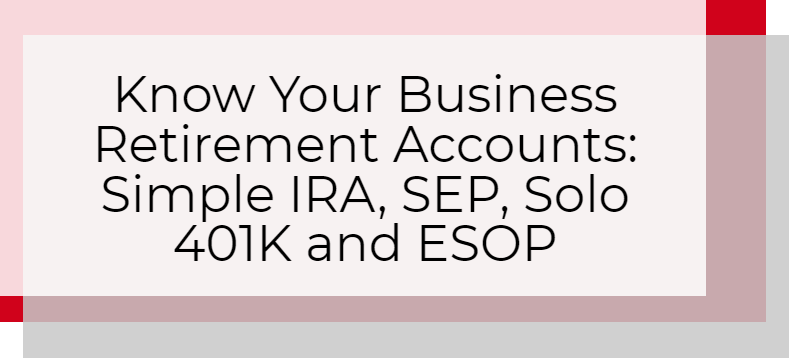
Being aware of the different types of self-employed retirement accounts that are available to you is important to get the most out of your retirement and retirement planning. The accounts that are available to most employees are your typical IRA and 401K with Roth and Traditional kickers. However, your account options are much more plentiful if you are self-employed. Beyond the typical Roth and Traditional IRA/401K, self-employed persons have a Simple IRA, SEP IRA, and Individual 401K available to them.
While being self-employed gives you a few more retirement account options you, for the most part, these other options function very much like a traditional IRA. With that in mind let’s talk about these other options and if you have any questions about these types of accounts and if they will work with as a self-directed account feel free to contact us anytime.
Simple IRA
A SIMPLE IRA functions much like a traditional IRA. The primary difference is the contribution limit. The following is the contribution limit for a SIMPLE IRA:
- An employee contribution equal to 100% of your net earnings from self-employment, up to $13,500 for 2021 ($16,500 if you are 50 or over). Plus…
- An employer contribution equal to 3% of your net earnings from self-employment.
FYI, net earnings are your revenues, minus your expenses, minus your deduction for one-half of your self-employment tax.
SEP IRA
Very similar to a traditional IRA, the main difference between the two is the contributions you can make. 2021 contributions for a SEP IRA are as follows:
- You can contribute whatever the lesser of the two happens to be 25% of your net earnings from self-employment or
- $57,000
Again, net earnings are a bit different than you may think but it is basically calculated as revenues minus expenses, minus the deduction for one-half of your self-employment tax, and the deductions for contributions to a SEP IRA.
One more important thing to note about a SEP IRA is that you cannot take any deductions out before you are 59.5 without being penalized.
Individual 401K
This is also referred to as a solo 401K, or a self-employed 401K. This plan is much like a 401K with an employer. The difference between a solo 401K and a regular employer 401K is that you are allowed to make a contribution on behalf of the employee and on behalf of the employer. How does this work? You are allowed the following two contributions:
- The employee contribution of 100% of your net earnings from self-employment, up to $19,500 for 2021 ($26,000 if you happen to be 50 or older)
- An employer contribution of 25% of your net earnings from self-employment.
Another benefit that makes the solo 401K such an attractive plan is the ability to have it in the form of a Roth account, so all distributions are tax-free.
Finally, if you are interested in a 401K with Roth option, you need to be aware that only the employee contribution can be counted as a Roth contribution. The employer contributions have to be made as a traditional contribution (tax-deferred).
Employee Stock Ownership Plan
An Employee Stock Ownership Plan, more commonly known as an ESOP, is a retirement plan where the company sets up a trust fund where the goal is to share their private stock or designate cash to buy existing shares, all within a tax-advantaged IRA. This type of account enables employees an opportunity to buy into their employer’s shares, and in turn, brings usable capital.
- Contribution limits to the ESOP is limited to $58,000 annually, or 100% of compensation
- Stock contributions are tax-deductible, and employees pay no extra taxes on received contributions to the ESOP
- Employees can roll over stock distributions into an IRA as to not incur income or capital gains taxes
Like other employer-sponsored benefits, employees who have shares within the company are not considered fully vested until seniority has been attained within that company. If a vested employee does leave that company, their employer must buy back the vested stock at a fair market price.
Summary
There are many different retirement account options available to a business owner. While each one of the mentioned options can be quite extensive the overall idea has been conveyed hopefully in a way that gives you the idea that will work best for you. Typically, the best option available to you is the one that is going to allow you to contribute the most per year based on your income. In many cases, this will come out to be the Solo 401K. One of the downsides to a solo 401K is that not every custodian offers them and they usually require more paperwork. If those things aren’t a problem for you then a solo 401K might be the right option for you.
Remember, all of these types of plans are available through a self-directed IRA. If you still need further help or information please feel free to contact us at any time in order to get the most out of your retirement.